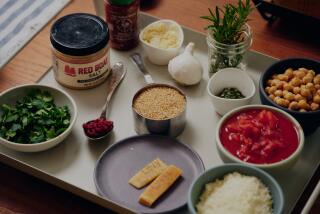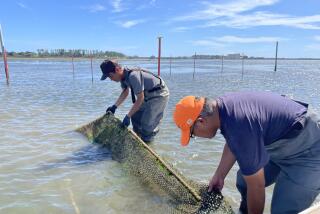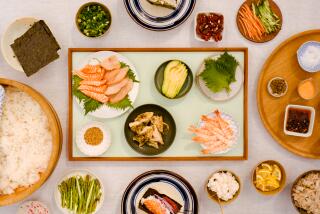A Lexicon of Sea Vegetables
* Alaria ( Alaria esculenta ) is similar to Japanese wakame . With its fronds up to 10 feet long, it resembles kelp and is golden to greenish-brown in color, with a bright-yellow midrib that flashes as it waves in the water. It grows rapidly during May and June.
Alaria should be cooked for at least 20 minutes. It is delicious either pre-soaked, or marinated and added to salads. It is comparable to leafy green vegetables in its high Vitamin A content, and it contains substantial amounts of Vitamin B. It has a subtle sea-brine flavor.
* Dulse ( Palmaria palmata ), abundant by late June and harvested throughout the summer, prefers shady crevices. When dried, it is purplish-red.
Dulse has been commonly eaten in the British Isles, and in the 17th Century it was used as a chewing tobacco by British soldiers. It has a distinctive briny and slightly spicy flavor, and it can be eaten dry, as a snack; in fact, it was sold in penny candy shops at the turn of the century. It cooks to a milder, sweet taste in about five minutes and is ideal in soups, stews, chowders and casseroles. It can be soaked and added to salads, and fried or baked into chips.
Dulse is the richest in iron of all the sea vegetables. It is high in vitamins B6 and B12, low in sodium, and high in potassium.
* Kelp ( Laminaria longicrusis , Laminaria digitata ) is similar to--and actually interchangeable with--Japanese kombu , an ingredient essential to dashi , the soup stock that is a cornerstone of Japanese cuisine. It thrives on rocky bottoms and is best (and most crisp) from March through June. After that it becomes softer and sweeter. It is wonderful as a flavoring for soup or added to rice or vegetables. It should have an even, usually greenish, color. It often has a dusting of white powder, which is normal and perfectly edible.
Kelp contains a natural acid that tenderizes beans and makes them more digestible. It is very high in minerals (including calcium, magnesium and iron), in chromium, which helps regulate blood sugar, and in iodine, which is essential for the thyroid.
* Nori ( Porphyra umbilicalis , which is olive or brownish to coal-gray, and Porphyra miniata , which is deep pinkish-red) can be from 1 to about 7 inches long. It grows in clumps on beaches, on smooth rocks and on nets that float on the surface of the water. Relatively rare in the wild, it is the most commonly farmed sea vegetable.
Nori has a nutty, mild, fish-like flavor. It is most commonly sold in toasted sheets that should be of even thickness. Beware of nori that is limp, purple or a vivid, unnatural green, all of which may signal poor quality. Nori is 28% protein and a good source of manganese, fluoride, copper, zinc, B vitamins, and vitamins C and E. Thought to reduce cholesterol, it can be used as a seasoning in rice, soups, grains, salads or even on popcorn. It is also used to wrap sushi.
Nori is known as âlaverâ in the West; in Wales it is cooked to a puree and served as a condiment called laver bread.
Other domestic sea vegetables to look for include Irish moss, sea lettuce, horsetail kelp and rockweeds.
Sea vegetables may be ordered by mail from: Maine Seaweed Co., P.O. Box 57, Steuben, Me. 04680; (207) 546-2875. Maine Coast Sea Vegetables, Shore Road, Franklin, Me. 04634; (207) 565-2907. Granum, 2901 N.E. Blakeley St., Seattle, Wash. 98105; (206) 525-0051.


